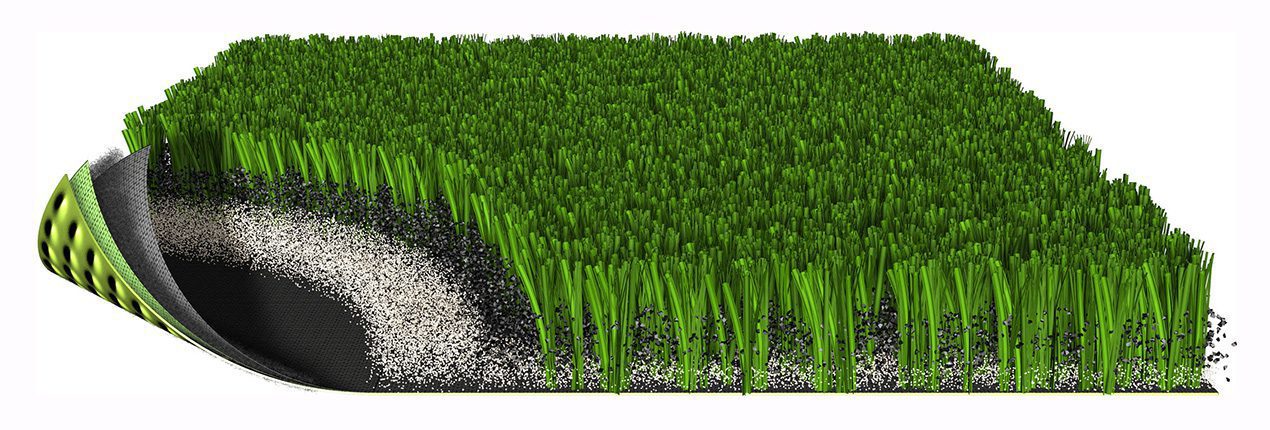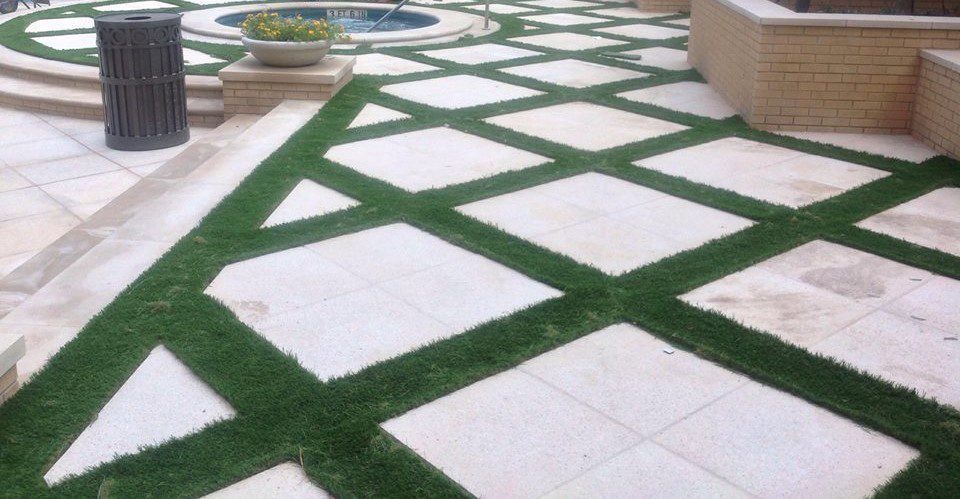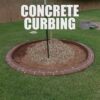What is Artificial Grass?
Artificial grass for landscaping in the US is growing in popularity 10% to 15% a year.
That means more homeowners are using artificial grass for:
- Lawns
- Dog runs
- Play areas
- Pool surrounds
- Rooftop gardens
- Deck areas
- Putting greens
- Decorative borders between pavers
But what is artificial grass?
Artificial grass is a landscaping option used instead of natural grass in areas that are difficult to grow or have water limitations and restrictions. Artificial grass is a man-made surface of fibers that looks like natural grass. It consists of threads strung and laced into a backing. The backing is laid on a drainage subbase and fastened along the perimeter of the installation area. Then silica sand is brushed in between the grass blades to keep the fake grass weighted down and to prevent it from blowing away. Today’s fake grass is made of nylon, polyethylene, or polypropylene that’s colored to look like various types of grass and comes in a variety of lengths. The variety of styles will make it easy for you to find a turf type to match your locally grown grass species.
How is Artificial Grass Made?
How does plastic become a beautiful lawn?
The actual green blades of artificial grass is made of a polyethylene material — a common form of plastic. The polyethylene comes in a solid pellet form and is heated down with color tones and UV resistant additives.
Equipment melts the plastic together and pushes it through a perforated steel plate — creating strands. The strands exit the steel plate into a vat of water, which hardens the artificial grass mixture. Rollers stretch the strands until they become as thin as real grass blades. Spools hold the artificial grass strands and once a spool has been filled, different colored strands are woven together to form yarns.
Mesh fabric joins with synthetic sheeting while the yarn travels through a tubing to a tufting machine. A tufting machine is like a giant sewing machine. The tufting machine contains over 200 needles to hook the yarn through the sheeting. The tufting machine inserts the artificial grass blades into the backing in rows. This machine gives the grass blades and thatch a more secure hold, increasing the turf’s life and durability.
While the turf is being tufted, small knives underneath cut the ends to make the yarn look like blades of grass. The backing is moved to a coating roller which picks up an adhesive to apply to the turf’s backing. The adhesive is then dried in both open air and an enclosed setting. As the turf exits the drying area, hot pins puncture holes into the turf. These holes are what water will drain through.
The artificial turf goes through several inspection points, including measuring the turf fiber length and minor trimming. Then, the turf is moved to a device that simulates football cleats to affirm the turf’s durability.
The History of Artificial Grass

What began as a way to help improve inner city youth’s physical fitness in the 1950’s, grew into an entire industry dedicated to artificial grass production.
Artificial turf first gained attention in the 1960s. The Ford Foundation’s Education Facilities Laboratory, along with Monsanto Industries and Chemstrand, supported the use of synthetic fiber carpeting in schools. From 1962 through 1966, Chemstrand’s research organization tested the synthetic turf carpet surfaces for flammability, water drainage, resistance, and durability.
David Chany headed the team of researchers who created the first notable artificial grass product. The first large artificial turf installation took place in 1964 at Moses Brown School in Providence, Rhode Island. The artificial grass product was called “Chemgrass.”
Artificial turf products really came to public prominence in 1966, when the AstroTurf product was installed in the Astrodome in Houston, Texas.
Artificial turf became a widespread success that continued to climb into popular use in the early 1970s, installed in baseball and football stadiums across the US. As the 1970’s came into full swing, the artificial turf industry joined the shag carpet trend and introduced “shag turf.” The longer yarns were created from a softer polypropylene material, much more user-friendly than its first generation predecessor.
Chemgrass, AstroTurf, and Shag turf all eventually were improved upon and evolved in the 1990’s to the third generation artificial grass. The third generation features a much softer polyethylene blade fiber. This artificial turf product is what you will find on any residential, commercial or sports artificial turf landscape installation today. The third generation artificial grass features longer fibers spaced farther apart and a “thatch,” or dead grass yarn positioned between the blades and backing.
Why Use Artificial Grass?

Artificial grass continues to grow increasingly popular, but why?
One of the simplest and most obvious reasons is that the artificial grass looks as green and lush as, if not better than, the real thing all year round.
This fake or synthetic grass has many benefits over natural grass. In recent years there have been huge improvements in the quality and price of artificial grass and as a result many home owners now have it laid in their yards.
The main advantage of artificial grass is that it is low maintenance as there is no need to water it, trim it, or fertilize it. Artificial grass saves you time, money, and it saves your back from the hard work of real grass. The Southern Nevada Water Authority says a home owner can save up to 55 gallons of water per year for every square foot of natural grass replaced with fake grass. Some water companies will offer a cash rebate for artificial grass, up to $1 per square foot.
Artificial grass does not attract pests or bugs, so it is safe for children.
Fake grass also stands up well to heavy traffic and use. Games can be played safely and securely on the turf. Your children and pets can have a run around the yard without bringing mud, dirt, or loose grass blades back into the house.
Artificial grass is eco-friendly because it saves water and it does not require chemicals or fertilizers to maintain it’s beautiful appearance. No pouring clean water into the grass. No burning gasoline to mow it. No fertilizer running into water sources.
-Call Golf Greens Texas for more information on getting an artificial grass lawn. 806-559-7048.







